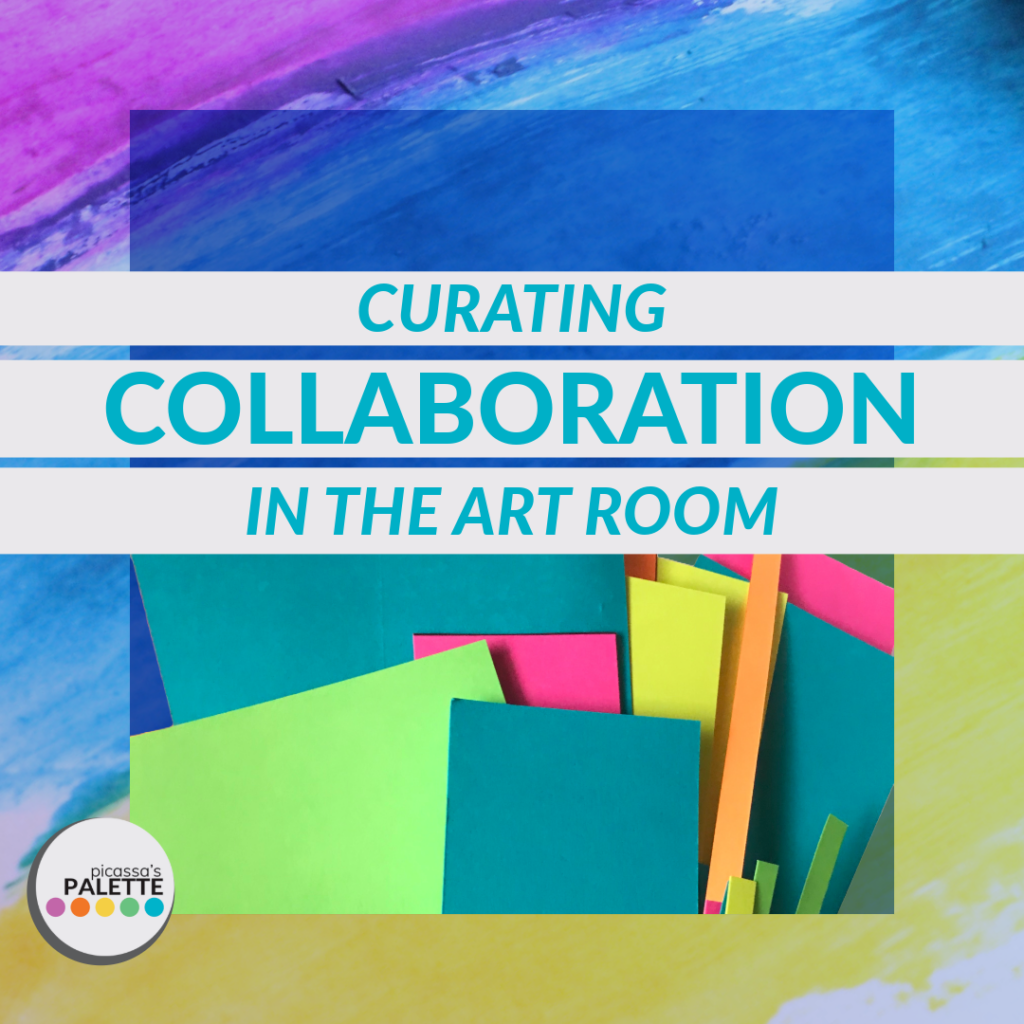
How to “Curate” Collaborative Groupwork Dynamics in Your Art Class
With this post, I want to delve into the foundational principles for successful groupwork and explore some tailored roles I find useful for teaching students how to approach collaborative projects when learning about Art History and other Visual Art Concepts.
Why Use Rules and Roles for Collaboration in Your Art Class?
With the rise of social media, video games, and remote learning induced by the COVID-19 pandemic, many students lack experiences to develop essential teamwork skills.
But, by utilizing effective Groupwork strategies in your classroom, you not only enhance the academic engagement in the concepts you’re teaching, but also cultivate essential interpersonal skills vital for student success within your classroom AND beyond. You can make a HUGE impact… because, who knows, you may be the only one who explicitly teaches them this stuff!
Groupwork RULES
First, I want to say that I originally noticed these “GROUPS” rules in the form of an anchor chart (educational poster) on Pinterest. Unfortunately, I never was able to locate its original source. However, it does align well with the same concepts proven effective for groupwork that I encountered in my educational coursework during college. Despite its unknown source, I find it to be super useful for communicating my expectations for Collaborative Groupwork in Art Class.
“GROUPS” Rules
G – Get Along.
Finding Compromise:
Encouraging students to understand the essence of compromise fosters harmonious teamwork. It’s about finding common ground and valuing diverse perspectives- something we naturally desire to develop and foster within our presentation of Art curriculum & its concepts anyway!
R – Respect.
Showing Courtesy:
Upholding respectful attitudes toward team members creates an inclusive atmosphere conducive to opening up the dialogue- enhancing creative exchange with peers.
O – Offer up Helpful Info.
Give Ideas and Share Feedback:
Encouraging students to share insights and constructive feedback enriches the collaborative experience, and as a result, elevates the quality of work the team members produce.
U – Use Your Voice Appropriately.
Working Voice Volume:
Maintaining voice volume to appropriate levels ensures effective communication without disrupting the learning environment for members of the team, or other groups.
P – Participate Effectively.
Engage Actively and Contribute Equally:
Teaching “active participation” skills ensures that each member contributes meaningfully, which harnesses the collective intelligence of the group. Additionally, each student should be given a role within the group.
S – Stay Focused.
Stick to the Plan:
Making a plan, maintaining focus and staying on task all enhance productivity and efficient use of group time.
The “Jigsaw Method”
Let me tell you about something called the “Jigsaw Method”. The jigsaw method involves dividing a topic into subtopics, assigning each subgroup a specific component, and then reassembling to share and integrate knowledge.
Each group delves deep into their assigned aspect, fostering expertise, and subsequently collaborates to construct a comprehensive understanding of the overarching subject matter.
In art ed, this method can be employed to study various artists, art periods, or mediums or movements.
For example, here’s one way the Jigsaw Method might be used in Art Education
Project Example Using The “Jigsaw” Method:
Assigning A Collaborative Presentation in the Art Room…
Let’s say you are teaching about POP Art in preparation for an individually created Pop Art-Inspired art piece.
You want the students to learn about 5 artists.
You break the class of 25 up into 5 groups of 5 students each.
You assign each group an artist from the 5 you chose.
Next, you define what information will need to be shared with the class, (ie: Artist Bio, Fun Facts, Famous Works, Artist Quote or Philosophy)
You make resources available for them (textbook, articles/handouts, previously screened websites/links, books, etc.) and set out their presentation materials (poster/paper, markers, pencils/eraser, etc)
You set the deadline (2 class worktimes)
You set the presentation time (3rd class meeting time)
Each group presents to the others (and to raise classroom engagement, you may even have them take notes on the other groups’ artists)
Now every student in your class has learned all about 5 artists of the POP art Movement, has actively participated in their own learning- which makes it MUCH more memorable (aka increases their potential for retention of the information) AND has gained valuable experience for collaborative teamwork skills.

Why Groupwork Roles?
Yes, it may take additional time to teach the roles you assign, especially after explaining all those expectations for group work, but by incorporating specific roles, you enhance individual student accountability and streamline the entire collaborative process, saving class-time overall. It keeps you from wasting time redirecting whole class behavior, from wasting time waiting for allll the groups to finish up, etc… I know you “get” it.
I find that I have to always teach the students – explicitly and directly – that these roles ARE individually specific responsibilities, but each person is responsible ALSO for simultaneously following all of the GROUPS rules, especially for the O, P, and S! (aka the Offer Info, Participate and Stay Focused categories!)
Here are the names of the tailored roles I’ve developed for collaborative group work in the art classroom, along with an explanation of their roles. Your Roles might change, depending on what the collaborative project requires, but the MAIN point of “Roles” is to give an automatic method for each participant to helpfully contribute to their group. It enhances their sense of accountability, but also their sense of belonging.
Groupwork ROLES
Fact Checker/Finders:
Verifying fact accuracy and ensuring precise spelling enhances the credibility of research and analysis.
Spokesperson/Representative:
Acting as a liaison between the group and the teacher, this role ensures issues, concerns, and questions are effectively communicated and addressed.
Materials Manager:
Responsible for sourcing and organizing necessary supplies and materials, promoting efficiency during group projects.
Lettering and Layout Designer:
Designing the visual presentation layout plan and ensuring clarity in information presentation enhances the overall aesthetic and readability of the project.
Timekeeper:
Strategically allocating time and adhering to schedules facilitates project completion within stipulated deadlines, instilling time management skills.
-A Word On “Belonging”-
Another quick tip to enhance each individual’s sense of belonging is to have every group decide upon a “team name” and refer to their group by that name. You might suggest they use alliteration, mascots, or a relevant thematic idea.
Cultivating Collaboration Builds Essential Skills
Amidst the surge of social media, screens, video game usage, along with the shift to remote learning prompted by the Pandemic, many students now find themselves lacking essential teamwork skills.
Groupwork in Art class presents a unique platform to refine these skills, presenting practical situations where students have the opportunity to learn how to navigate differing viewpoints, communicate adeptly, and cooperate towards mutual goals.
Collaboration in your Art Class can provide necessary practice for these skills – within experiences that foster interpersonal abilities which extend beyond academic settings, empowering students to excel in an interconnected environment and thrive within the modern global society.
Hope the “GROUPS” Rules for Collaboration work out well for you. Let me know if you’ve tried it, or the “Jigsaw” method in your art room!